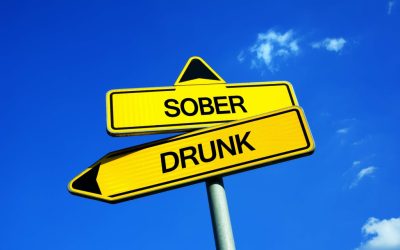Studies have shown that many people with rhinophyma have little to no history of alcohol abuse, while many heavy drinkers never develop the condition. This evidence clearly demonstrates that alcohol consumption is not the direct cause of rhinophyma, though it may act as a trigger for those genetically predisposed to rosacea. While alcohol can trigger or worsen rosacea symptoms in susceptible people, it does not cause the underlying condition.
Treatment Specialties
When blood vessels burst, it makes the blood visible under the surface of the skin, leading to skin redness. In more severe cases, the nose and cheeks can take on a purple hue and start to become severely disfigured as they become more bulbous. It’s beneficial to individuals that need a safe space to enter recovery. A person with a nose from drinking alcohol is likely in active addiction.
Alcoholic Nose: Understanding Rhinophyma and Its Relationship to Alcohol Use
Unfortunately, people who suffer from the so-called alcoholic nose may experience some stigma that prevents them from seeking medical help. The primary cause of drinkers nose is the vasodilatory effect of alcohol on blood vessels. Alcohol consumption can lead to the widening of blood vessels near the skins surface, resulting in increased blood flow to the face, including the nose. Over time, this constant dilation of blood vessels can contribute to the development of drinkers nose. Addiction treatment is available for those who are struggling with alcohol abuse or addiction. Specially trained staff are available right now to discuss treatment options for you or your loved one.
Recognizing Early Signs
While drinking alcohol may not cause rhinophyma, or lead directly to an ‘alcoholic nose,’ it can have several other negative consequences. For starters, drinking more alcohol than is recommended at once can lead to alcohol poisoning and reckless behavior, which can cause injury to yourself or others. The misconception that Alcohol Nose is a direct result of heavy drinking leads to stigma and social challenges for those affected.
You cannot and should not assume that somebody is an alcoholic simply because they have rhinophyma. You can only use rhinophyma as a starting place for someone you know well. Drug rehabilitation Because alcoholic nose and alcoholism are not officially connected, it is hard to say that alcoholic nose points to an addiction.
Treatment Options for Alcoholic Nose
Laser therapy using CO2 lasers can precisely remove excess tissue while minimizing bleeding and promoting healing. This technique allows for excellent cosmetic results and relatively quick recovery times. Dermabrasion involves mechanically removing the outer layers of thickened skin to restore a more normal contour. Whether you are struggling with addiction, mental health or both, our expert team is here to guide you every step of the way.
There are also a lot of complications that come with having Rhinophyma at the same time. However, only in that, the negative health consequences of drinking may make people more likely to develop the conditions they are already at risk for. Alcoholic’s nose or Rhinophyma is a condition in which the nose and occasionally other facial features become swollen and permanently enlarged. At the same time, the nose will likely become redder, bumpy, and completely different in shape.
It’s thought of as the most effectual alternative for long-term results. Other alcoholism nose treatments can include nasal sprays, antihistamines, and decongestants. If the condition is severe, a doctor may recommend a course of antibiotics or steroid medications. Alcohol is an irritating substance that causes inflammation in the skin, leading to redness, bumps, and swelling around the nose. Alcohol also decreases blood flow to the affected area, making it more difficult for skin cells to heal, further exacerbating this visual effect.
- But for people who do, having chronic infections is common, since fluids in the skin ultimately trap bacteria.
- ” It’s important to realize that alcohol doesn’t just affect the nose; it impacts the entire body.
- While alcohol can contribute to rosacea and rhinophyma, it does not seem to cause the conditions in the first place.
- Learn more about rhinophyma, the relationship with alcohol and what treatment options are available.
When choosing an alcohol addiction treatment center, it’s important to choose one that understands the disease of addiction and the best ways to help promote strong, lasting change. With centers all around Oregon, Serenity Lane makes your physical and mental health our No. 1 priority. Catching the early signs of rhinophyma can slow down or stall its development. The condition is seen as a deformity that can lower self-image and reduce overall confidence in those affected. This chemical makes the blood vessels alcoholic nose images open more than other alcoholic drinks, resulting in abnormally high blood flow. As such, drinkers with rosacea should avoid red wine if they want to keep flare-ups to a minimum.
Health Conditions
Rhinophyma can be effectively treated with surgical techniques such as dermabrasion, electrocautery, and laser therapy. Over time, the number of sebaceous glands and the changes in connective tissue increase, which can result in progressive deformity. Also, chronic infection often results because the fluid from the sebaceous glands thickens and can hold bacteria. Finally, acne rosacea advances to late-stage rosacea, and rhinophyma is an aspect of this. The CIWA Assessment scale is a validated assessment tool comprising 10 items, used to measure the intensity of an individual’s symptoms during alcohol withdrawal. Drugs may successfully treat less intense cases and different subtypes of rosacea.


